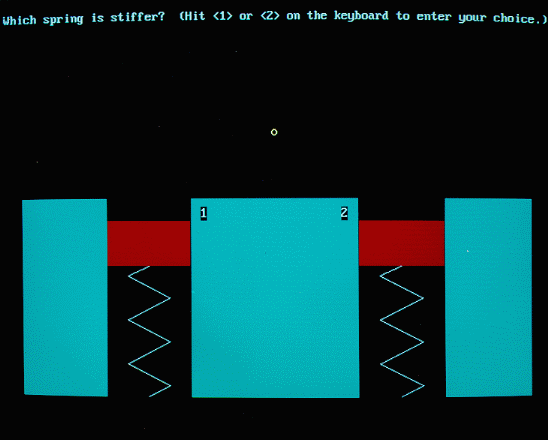|

Psychophysical experiments were also conducted with the Planar Grasper
to investigate the influence of visual information on the perception of
stiffness of virtual springs (Srinivasan, Beauregard, and Brock, 1996).
In each trial, the subjects could manually press and feel the stiffness
of two springs programmed to be side-by-side within the workspace of the
Planar Grasper. At the same time, visual images of the springs were displayed
on a computer monitor such that the amount of deformation of the spring
that was pressed was displayed in real-time. The subjects were asked to
judge which of the two springs was stiffer. The results showed that both
in the absence of visual information (when the monitor was turned off)
as well as when the visual displacement was exactly equal to the haptic
displacement, the subjects were almost 100% correct in their judgements.
However, when the visual displacement of the two springs were interchanged
(i.e., for a given force applied by the subject, the visual displacement
of the stiffer spring was equal to the haptic displacement of the softer
spring and vice versa) the subjects were almost 100% wrong in their judgments.
These and other experiments involving different scaling values between
the visual and haptic displacements showed that in computing the stiffness
of objects, when subjects have a choice of associating visual or haptic
displacements with their haptic perception of force, they consistently
choose the visual displacements, i.e., the visual information dominates
over kinesthetic information in this context. An important implication
to virtual environments is that by skewing the relationship between the
haptic and visual displays, the range of object properties that can be
effectively conveyed to the user can be significantly enhanced. For example,
although the range of object stiffnesses that can be displayed by a haptic
interface is limited by the force-bandwidth of the interface, the range
perceived by the subject can be effectively increased by reducing or eliminating
visual deformation of the object.
|

